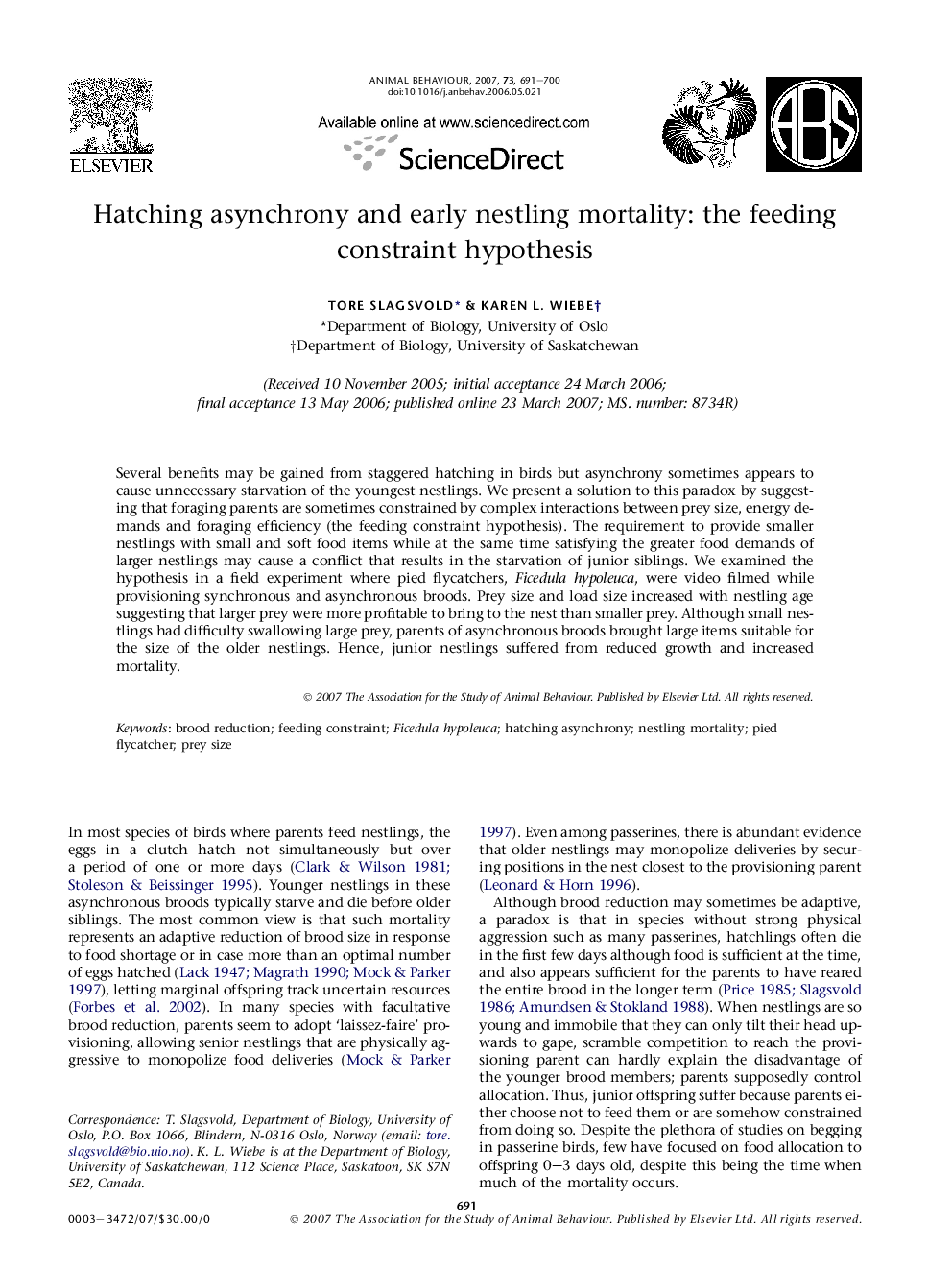| Article ID | Journal | Published Year | Pages | File Type |
|---|---|---|---|---|
| 2419023 | Animal Behaviour | 2007 | 10 Pages |
Several benefits may be gained from staggered hatching in birds but asynchrony sometimes appears to cause unnecessary starvation of the youngest nestlings. We present a solution to this paradox by suggesting that foraging parents are sometimes constrained by complex interactions between prey size, energy demands and foraging efficiency (the feeding constraint hypothesis). The requirement to provide smaller nestlings with small and soft food items while at the same time satisfying the greater food demands of larger nestlings may cause a conflict that results in the starvation of junior siblings. We examined the hypothesis in a field experiment where pied flycatchers, Ficedula hypoleuca, were video filmed while provisioning synchronous and asynchronous broods. Prey size and load size increased with nestling age suggesting that larger prey were more profitable to bring to the nest than smaller prey. Although small nestlings had difficulty swallowing large prey, parents of asynchronous broods brought large items suitable for the size of the older nestlings. Hence, junior nestlings suffered from reduced growth and increased mortality.
